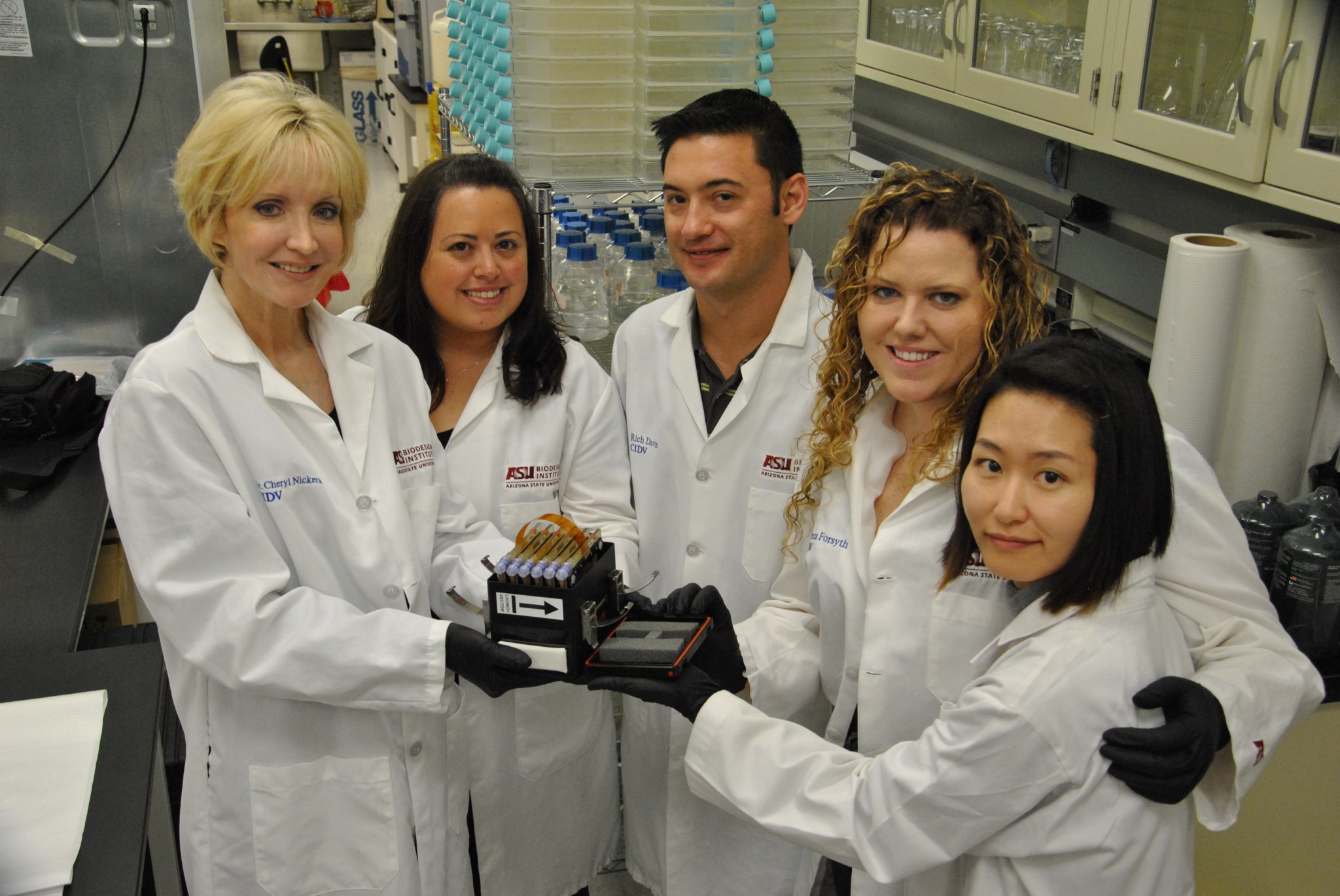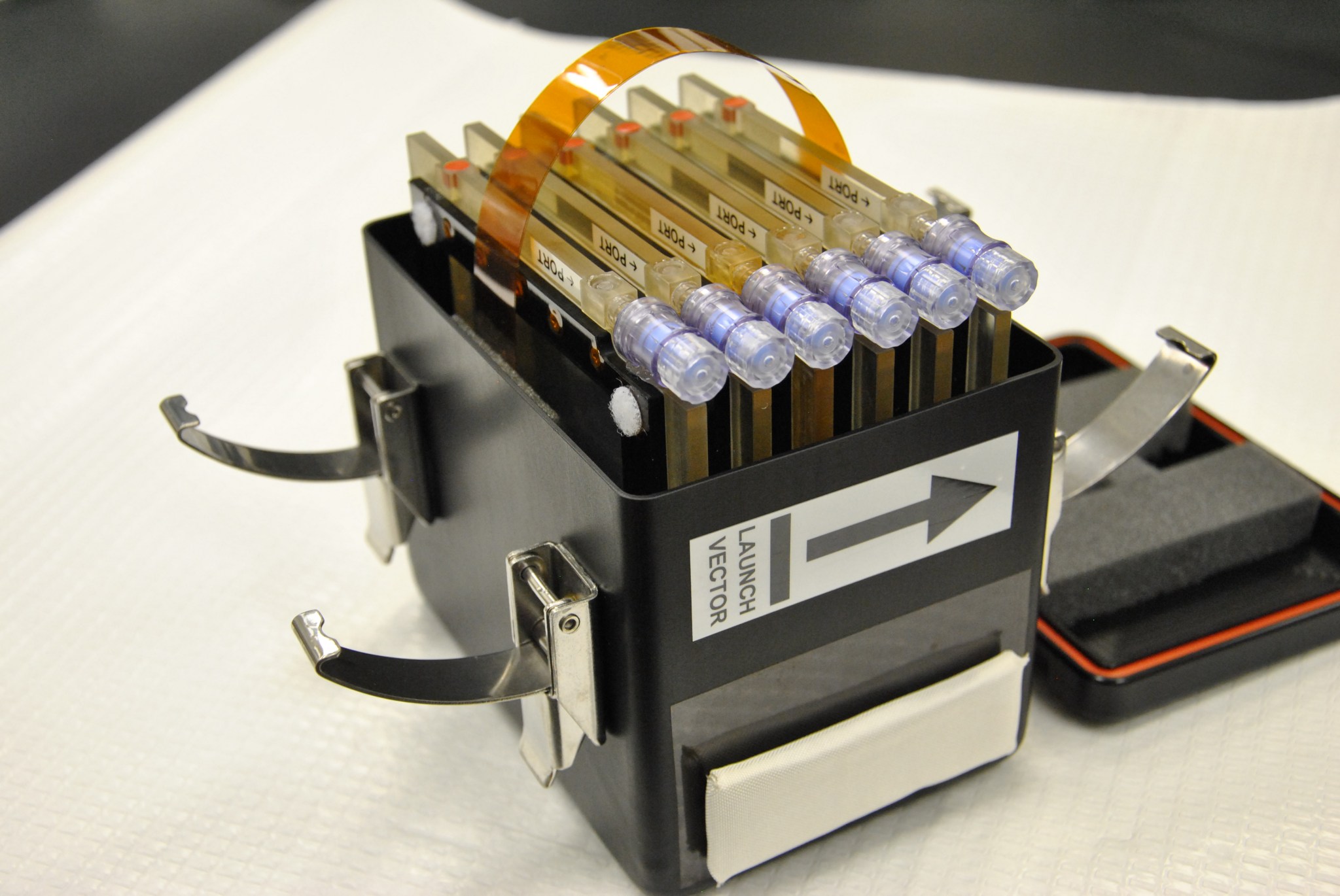Micro-5 (SpaceX-5)
Investigation of Host-Pathogen Interactions, Conserved Cellular Responses, and Countermeasure Efficacy during Spaceflight using the Human Surrogate model Caenorhabditis elegans
The Micro-5 investigation studies how microgravity alters the infection process between host and pathogen. The study focuses on identifying and characterizing the cellular, molecular and immune response mechanisms that play a role in the disease process in microgravity.
The host organism used in the study is the roundworm, Caenorhabditis elegans (C. elegans). C. elegans, a widely-studied model organism, is a scientific analog for the human body due to the many genes, biological functions and physiology that are common between humans and C. elegans.
The pathogen used in the study is the bacterium Salmonella enterica serovar Typhimurium (S. Typhimurium). Salmonella is one of the major model organisms for studying bacterial infection processes on Earth and in space. Salmonella is also the leading cause of bacterial foodborne illness and the number one cause of death by foodborne pathogens in the United States.
Micro-5 also evaluates the use of phosphate as a nutritional countermeasure to protect C. elegans against infection with a foodborne pathogen.
The data derived from the Micro-5 study will expand our knowledge of the bacterial infectious disease process both in microgravity and on Earth. The main goals of the investigation are to better understand how intestinal pathogens cause disease, to learn how we can prevent or counteract foodborne illness in astronauts, and to develop novel strategies for preventing or treating intestinal infectious disease for the general public on Earth.
Micro-5 is managed and supported by NASA’s Space Biology Project at NASA’s Ames Research Center in Moffett Field, California. Funding for Space Biology comes from the Space Life and Physical Sciences Research and Applications Division within the Human Exploration and Operations Mission Directorate at NASA Headquarters
Project Team
Project Manager: Elizabeth Pane, Space Biosciences Division, NASA Ames Research Center
Project Scientist: Kevin Sato, Ph.D., Space Biosciences Division, NASA Ames Research Center
Principal Investigator: Cheryl Nickerson, Ph.D., Arizona State University
Payload Development and Implementation: BioServe Space Technologies at the University of Colorado Boulder
For more information, see the Space Station Research Explorer Micro-5 mission.
NASA Commentator Brandi Dean talks with Dr. Cheryl Nickerson of Arizona State University about her International Space Station experiment Micro-5, which is designed to improve our understanding of the risk of infections faced by long-duration space travelers.


































